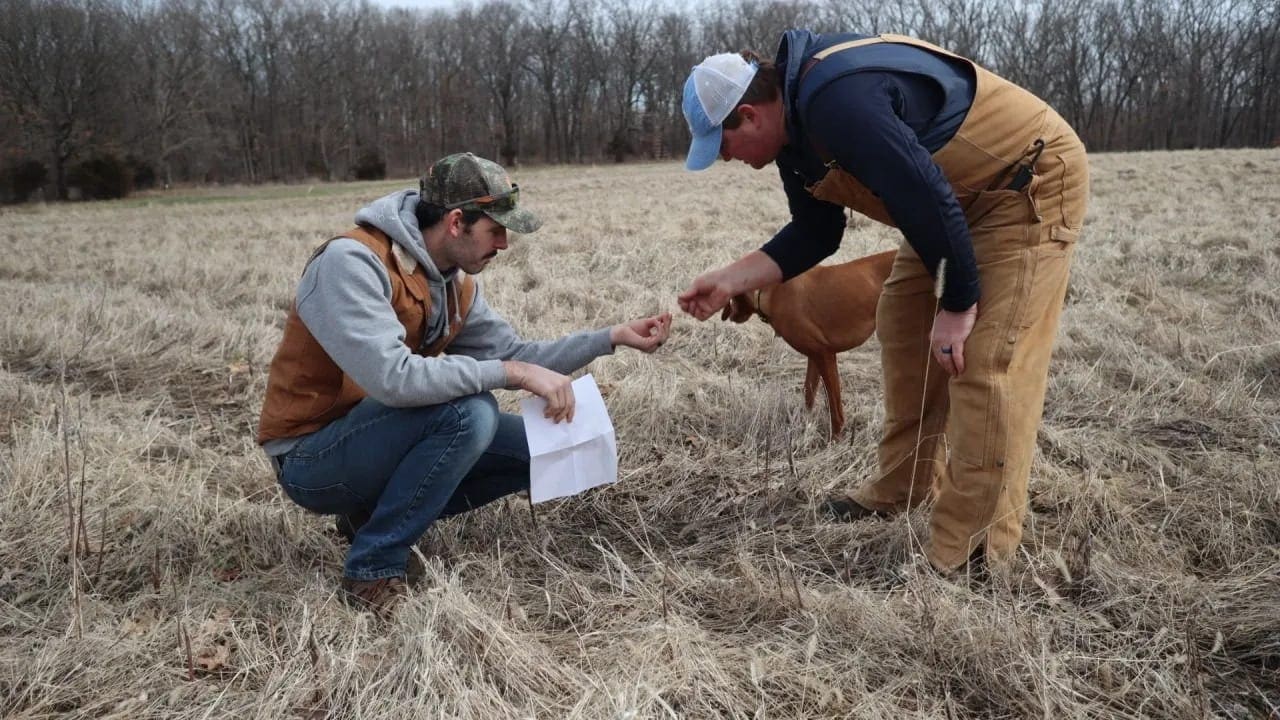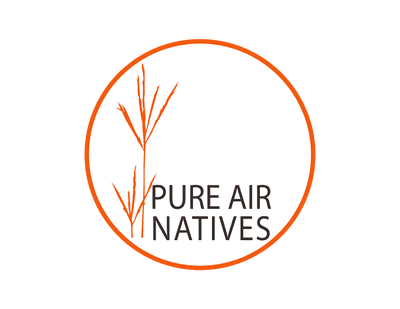
Native Seed, Plants, & Gardening FAQs
With native gardening becoming more and more popular, we’re often asked the same questions over again. So we’ve taken some guess work out of it & answered the most frequently asked native plant questions right here. We hope these native gardening FAQs will help gardeners, farmers, and contractors have an easier time getting started with their native seed project.
If you didn’t find the answer you were looking for, fill out the contact form below. We’ll get back to you as soon as we can!
What Are Native Plants? What Makes A Plant Native?
How Can I Tell If A Plant Is Native Or Not?
Determining whether a plant is native can be a nuanced task, as it involves understanding its origin and ecological impact. The United States Department of Agriculture (USDA) categorizes plants into several groups such as native, non-native, invasive, naturalized, and exotic, based on their ecological roles and origins.
To check if a plant is native, look at its USDA Plant Profile is a comprehensive database that provides detailed information about various plant species. On this profile, you can find a wealth of information including the plant’s native status, its distribution, habitat, and ecological significance.
For example, it will indicate if a plant is native to a particular region, which means it has evolved and existed in that area for a long period, forming integral relationships with the local ecosystem. In contrast, if a plant is labeled as non-native or invasive, it suggests that the plant was introduced to the area, either intentionally or accidentally, and may potentially disrupt the local ecological balance.
Additionally, these profiles often include other valuable information such as the plant’s growth habits, preferred environmental conditions, and its role in the ecosystem, whether as a food source for wildlife or as a pollinator plant. Understanding these aspects can be particularly useful for gardeners, conservationists, and educators who are looking to promote native plant growth or control invasive species.
Overall, using the USDA’s categorization and the Plant Profile database is a straightforward and reliable way to identify the native status of a plant and gain deeper insights into its ecological role and requirements. This knowledge is crucial for anyone interested in gardening, conservation, or ecological studies, as it helps in making informed decisions that support local biodiversity.
What Does Annual, Biennial, Perennial Mean?
An annual, biennial, and perennial are terms used to describe the lifecycle of plants, each varying in duration and characteristics.
Annual plants are those that complete their entire life cycle in one growing season. This cycle includes germination, growth, flowering, seeding, and ultimately dying, all within a single year. Annuals are known for their vibrant flowers and are often used in native gardens for their ability to provide quick and colorful blooms. While it is true that the original plant will not survive beyond a year, annuals can appear to ‘come back’ the next year. This is due to their seeds, which can fall to the ground, survive the winter, and then germinate and grow anew when conditions are favorable in the following growing season. This ability to self-seed can give the impression of the original plant returning, but in reality, it is a new generation of the plant.
Biennial plants, on the other hand, have a two-year life cycle. In the first year, these plants focus on growing strong roots and foliage. It is not until the second year that they flower, produce seeds, and then die. This two-year cycle creates a unique growth pattern where the plant’s energy in the first year is primarily devoted to establishing a robust foundation for survival and reproduction in the second year.
Perennial plants are those that live for more than two years. These plants typically grow and bloom over the spring and summer, die back every autumn and winter, and then return in the spring from their rootstock. Perennials are known for their longevity, with some species living for only a few years while others can survive for decades. The long-lived nature of perennials makes them a popular choice for gardeners looking for plants that will continue to return year after year.
Some well-known perennial prairie grasses include:
- Big Bluestem (Andropogon gerardii),
- Little Bluestem (Schizachyrium scoparium),
- Indian Grass (Sorghastrum nutans), and
- Switchgrass ((Panicum virgatum)
These grasses not only provide ecological benefits but also add aesthetic value to natural landscapes with their varied textures and colors throughout the seasons.
Understanding the differences between annuals, biennials, and perennials is crucial for native garden planning and maintenance. Each type of plant has its own unique requirements and offers different benefits. This knowledge enables gardeners to create varied and sustainable gardens that can change and evolve over the years.
Do I Need A Mix Of Annual, Biennial, & Perennial Plants In My Prairie/Garden?
Incorporating plant diversity in your prairie or garden isn’t essential, but can do wonders for your landscape.
A blend of annual, biennial, and perennial plants can vastly improve your prairie or garden’s ecological value and visual charm, which is why our wildflower seed mixes are so popular.
Replicating natural ecosystems in restoration projects often involves a mix of plant types. This variety improves ecosystem resilience, offering a sustained supply of food and shelter for wildlife throughout the seasons.
As we mentioned in the FAQ above, the main advantages of annuals and biennials are:
- Rapid Growth & Ground Cover: Annuals quickly cover the ground, aiding in soil moisture and temperature regulation.
- Weed Competition: Their fast growth helps manage weeds.
- Pollinator Support: They provide early-season nectar and pollen, crucial for various pollinators.
The main advantages of perennials:
- Long-Term Stability: Perennials form the backbone of the ecosystem, enhancing soil health and reducing erosion over time.
- Beauty: They ensure a continued display of blooms and foliage.
Tips To Keep In Mind:
1. Tailor your plant choices to your specific regional conditions, considering soil, climate, and wildlife.
2. Select plants that complement and support each other for a well-rounded ecosystem.
Pure Air Natives Wildflower & Grass Mixes
If you want to avoid guesswork and buy wildflower seed mixes that were developed by ecological professionals, check out Pure Air Natives seed mixes.
Here’s how we make this process easier:
- We offer curated native seed mixes designed to create balanced, sustainable ecosystems.
- Depending on the mix, each contains a thoughtful selection of annuals, biennials, and perennials, ensuring year-round interest and support for local wildlife. Some mixes also include prairie grass. We do offer forb only mixes!
- Each mix is tailored to specific environmental conditions and restoration goals, providing an easy and effective way to establish a diverse and thriving prairie or garden.
Shopping for seed mixes has never been easier. We also offer custom mix quotes if you are enrolled in federal cost sharing programs or have a specific project in mind.
Overall, while not mandatory, a mix of various plant types enhances ecological value and aesthetic appeal.
When To Plant Native Wildflower Seeds? When Is The Best Time To Plant Prairie Grass?
Planting native wildflower seeds and prairie grasses at the right time is crucial for their successful growth and development. Here’s a more detailed approach for planting these, along with a quick bullet list of steps:
Planting Native Wildflower Seeds:
- Best Time to Plant: The optimal time for planting native wildflower seeds is either in the spring or during the late fall for dormant seeding.
- Fall Planting (Dormant Seeding): Planting in late fall, after the first frost but before the ground freezes, can be beneficial. The seeds will remain dormant over winter and then germinate naturally with the warming temperatures of spring.
- Spring Planting: In spring, plant as soon as the risk of frost has passed. This timing allows the seeds to take advantage of the warm growing season, ensuring they have enough time to mature and set seeds.
1. Site Preparation: Before planting, prepare the site by removing existing vegetation and loosening the soil to ensure good seed contact.
2. Seed Distribution: Spread the seeds evenly over the prepared soil. Mixing the seeds with sand can help achieve a more uniform distribution.
3. Soil Contact: Lightly rake the area to cover the seeds with a thin layer of soil, as most wildflower seeds need sunlight to germinate and should not be buried too deeply.
Planting Prairie Grass:
- Best Time to Plant: The ideal time for planting prairie grass is in late fall or early winter. This gives the grasses enough time to establish their deep root systems.
- Soil Preparation: Just like with wildflowers, start by preparing the soil. Remove weeds and loosen the soil to improve seed contact and root penetration.
- Seed Sowing: Sow the seeds evenly, taking care to not plant them too deeply. Prairie grass seeds generally need good light to germinate.
- Watering: After planting, ensure the area is kept moist until germination and initial growth. Regular watering helps establish the young grasses.
General Tips:
- Weed Control: Keep the area clear of weeds, especially in the initial stages of growth.
- Have Patience: Remember that native plants and prairies take time to establish fully. It may take a couple of years before they reach their full potential.
- Natural Growth: Avoid fertilizing or over-watering. Native plants are adapted to local conditions and will thrive with minimal intervention once established.
By following these steps, you can ensure a successful and vibrant native wildflower and prairie grass habitat that contributes to the local ecosystem and offers a natural beauty to the landscape.
What is Pure Live Seed (PLS)? Why Is It Important?
PLS is vital for determining the actual amount of effective, growable seed in a mix. This is especially important in restoration projects, where the success of seeding efforts depends on the germination and growth of native species. PLS is expressed as a percentage and signifies the percentage of seed that is guaranteed to germinate.
In short, here’s what PLS seed means for you:
- Guaranteed Native Seed Quality: Buying PLS seed means receiving seeds with certified quality and viability. You won’t be receiving dead seeds or weeds.
- Higher Success Rate: Customers can expect a higher success rate in germination and plant growth. Very high germination rates compared to regular harvested seed.
- Cost Efficiency: Ensures your hard-earned money is spent on viable seeds, not on inert or non-germinating material. You won’t be paying a penny for dirt, sticks, leaves, or other matter in your seeds.
- Accurate Seeding: Allows for precise calculation of seeding rates, avoiding over or under-planting. This is vital for native landscape designs, contractors, and property owners who want to save time and money on their project.
- Predictable Outcomes: Provides predictability in planting projects, reducing uncertainty and risk. Our Midwest ecotypes are perfectly suited for our climate, which makes seeding and growing them a breeze!
Check out our in-depth PLS article to learn more about this topic. We’ll explain how PLS is calculated, how buying PLS seed is more cost-effective for you, and how only selling PLS seed has contributed to Pure Air Natives’ excellent seed supplier reputation in the Midwest.
Shop High-Quality Native Seeds for Your Garden and Restoration Projects
You need it, we got it! Pure Air Natives is the leading Midwest seed supplier and nursery for contractors, home gardeners, other seed retailers.
Check out our best sellers below!

